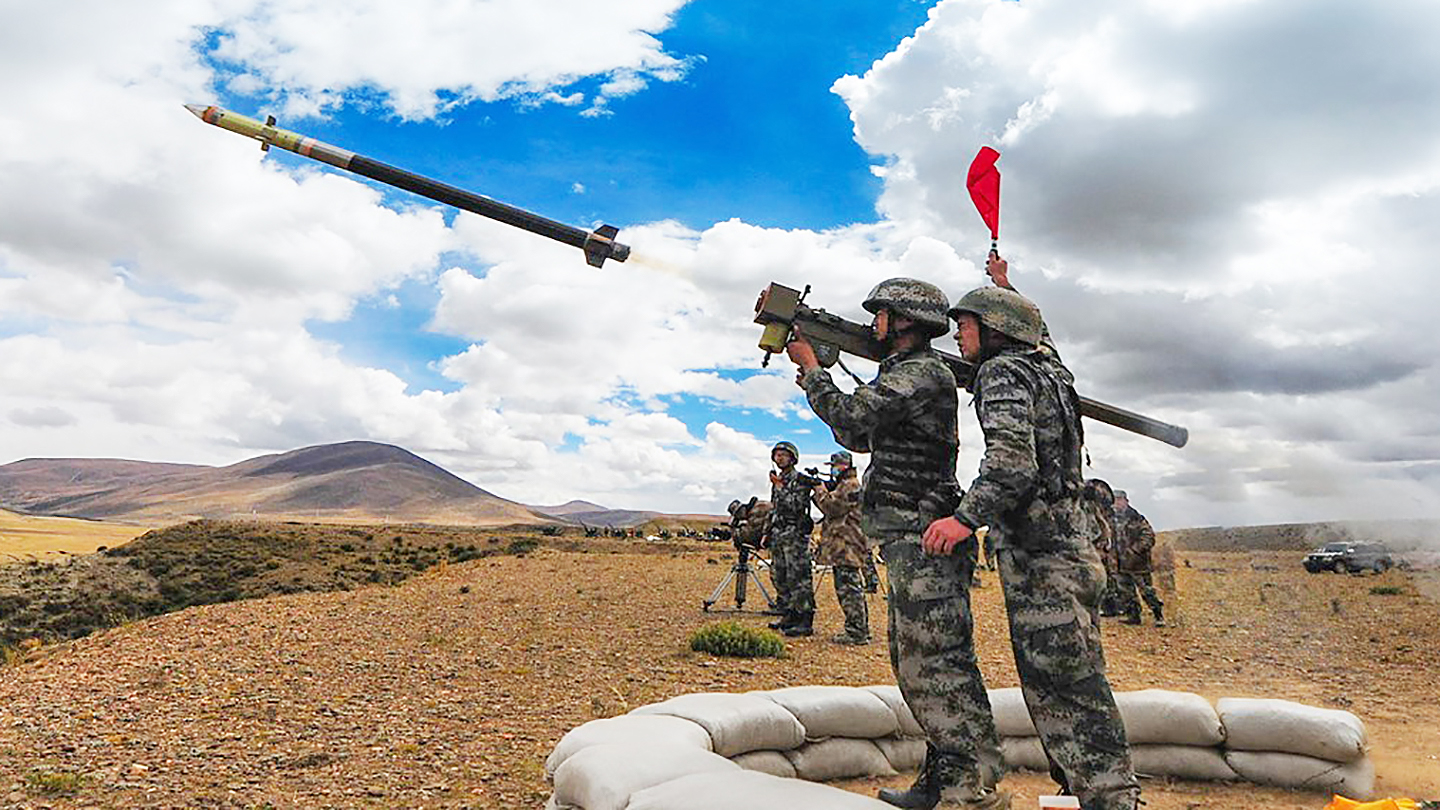Over the past decade, there has been a significant increase in the illicit trade of advanced Chinese-designed shoulder-fired surface-to-air missiles, also known as man-portable air defense systems, or MANPADS, according to a new report from the independent monitoring group Small Arms Survey.
Previous assessments by Small Arms Survey – an associated program of the Graduate Institute of International and Development Studies designed to track trends related to small arms and other light weaponry and armed violence – and others have shown more limited illicit distributions of these weapons globally. MANPADS, in general, have been in the news of late as massive numbers of U.S.-made Stingers and other advanced types from many other nations have flowed into Ukraine, but this new report only covers data collected relating to the period between 2011 and mid-2021, before Russia launched its all-out invasion.
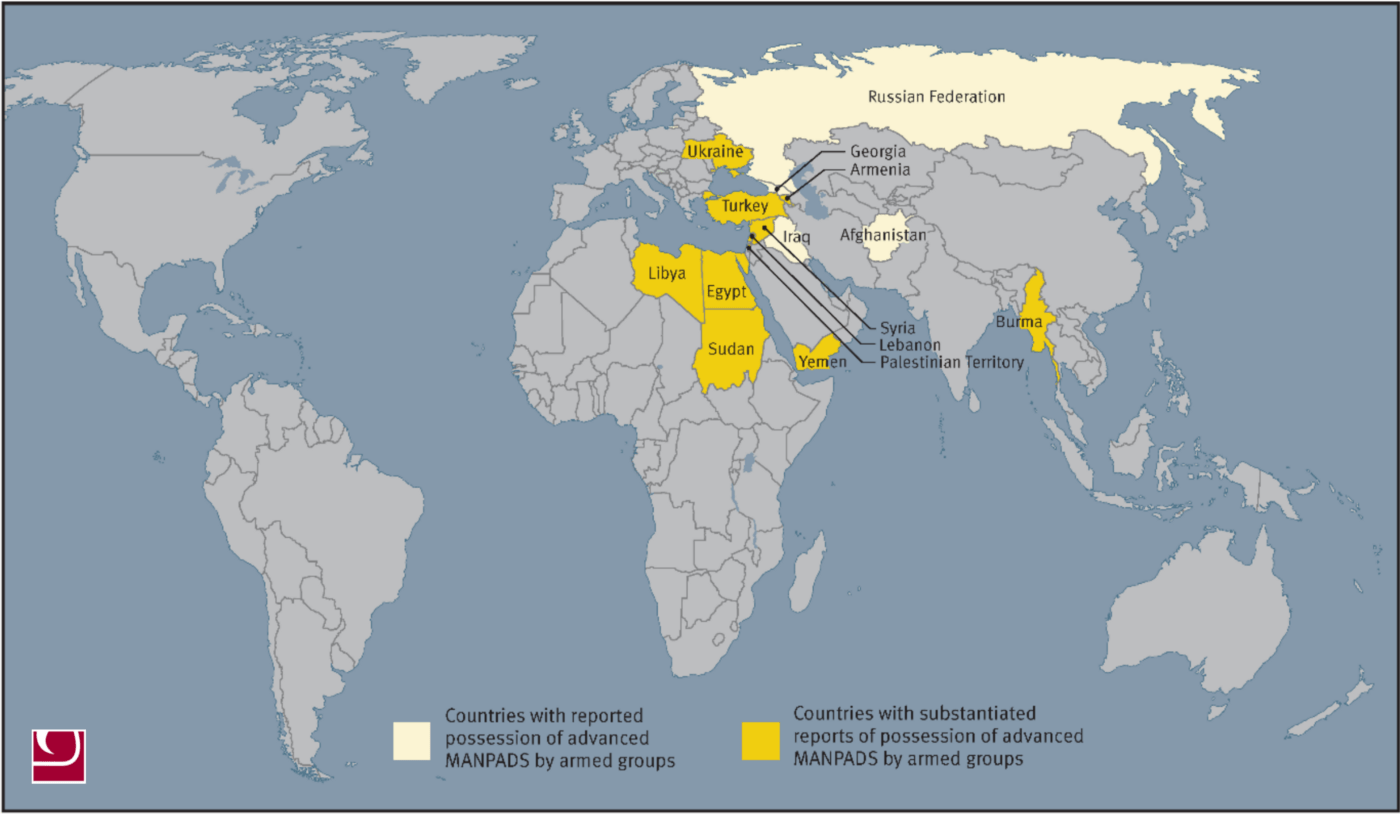
What Small Arms Survey’s new analysis of data from 2011-2021 did uncover is a major trend in the illicit proliferation of advanced Chinese MANPADS. This new report notes that more than two decades ago, for instance, open-source intelligence and defense news company Janes was able to find evidence of just one model of advanced Chinese MANPADS in the inventories of non-state actors.
Since then, that number has markedly increased.
Small Arms Survey has now identified 49 ‘reported’ or ‘substantiated’ cases of “advanced Chinese-designed MANPADS in the possession of (or in transit to) at least 17 different armed groups in seven countries since 2011,” according to the report released today.
The arms-monitoring organization said the weapons in question include complete FN-6-series MANPADS, which date back to at least the 1990s and is derived from the Soviet-designed Igla-series, obtained by non-state actors in Iraq, Lebanon, Myanmar, and Syria. There report also documents apparent instances where gripstocks – a term for the reusable component of many MANPADS systems to which actual missiles are attached before firing – for the more modern QW-18 were attached to Cold War-era SA-7 “Strela-patterned launch tubes in Gaza.”
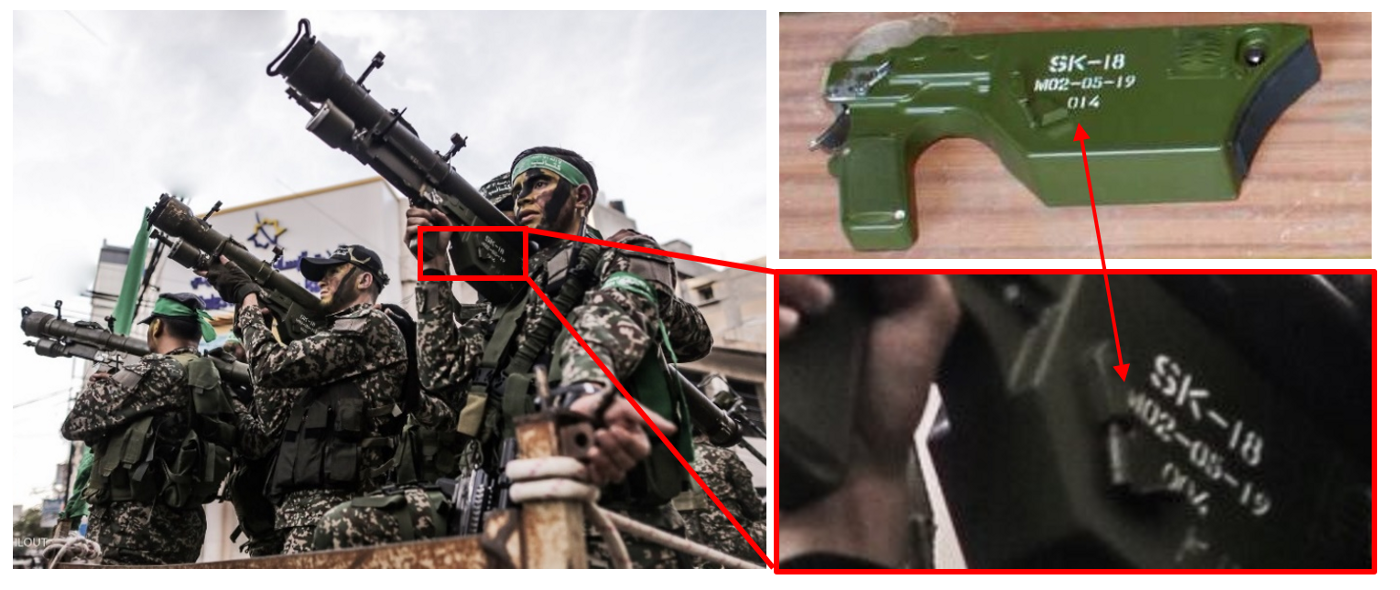
The report notes that while many of the QW-series MANPADS identified since 2011 were acquired or intended for armed groups supported by Iran, nailing down a direct connection to that nation is not easy.
Still, “evidence gathered by UN investigators and images posted on social media point to the Iranian government as the source of many” of those systems. UN investigators, the survey noted, “identified Iran as the most likely source of QW-18 pattern MANPADS and other weapons found on the Jihan, a dhow interdicted off the coast of Yemen in 2013. The US government and analysts from Conflict Armament Research [CAR] also concluded that Iran was the source of the shipment.”
CAR is a separate independent group focused on investigating arms trafficking in conflicts around the world.
U.S. Central Command (CENTCOM), which oversees military operations in the Middle East and Central and Southwest Asia, could not immediately comment on the most recent Small Arms Survey findings.
The increase in illicit Chinese-designed MANPADS to the CENTCOM region echoes what a January Middle East Institute report said is a rise in China’s legal arms exports there.
Some estimates indicate that “between 2016 and 2020, China increased the volume of its arms exports to Saudi Arabia […] from $35 million in the period between 2011 and 2015 to $170 million in 2016 – 2020.”
That also applies to exports to the United Arab Emirates (UAE), the report states, “which increased from $45 million to $121 million during the same periods.”
Small Arms Survey also noted the acquisition of North Korean MANPADS by armed groups in the Middle East. Imagery from Gaza and Syria show multiple North Korean HT-16 pattern MANPADS in the possession of Hamas and various Syrian armed groups.
The Syrian groups appear to have obtained their illicit HT-16 MANPADS from government stocks, according to Small Arms Survey. It is unclear where Hamas obtained their HT-16s, which could have come directly from North Korea or indirectly via a third party with access to North Korean weaponry, such as Iran.
Still, the largest source of illicit MANPADS remains the so-called first-generation systems designed by the former Soviet Union.
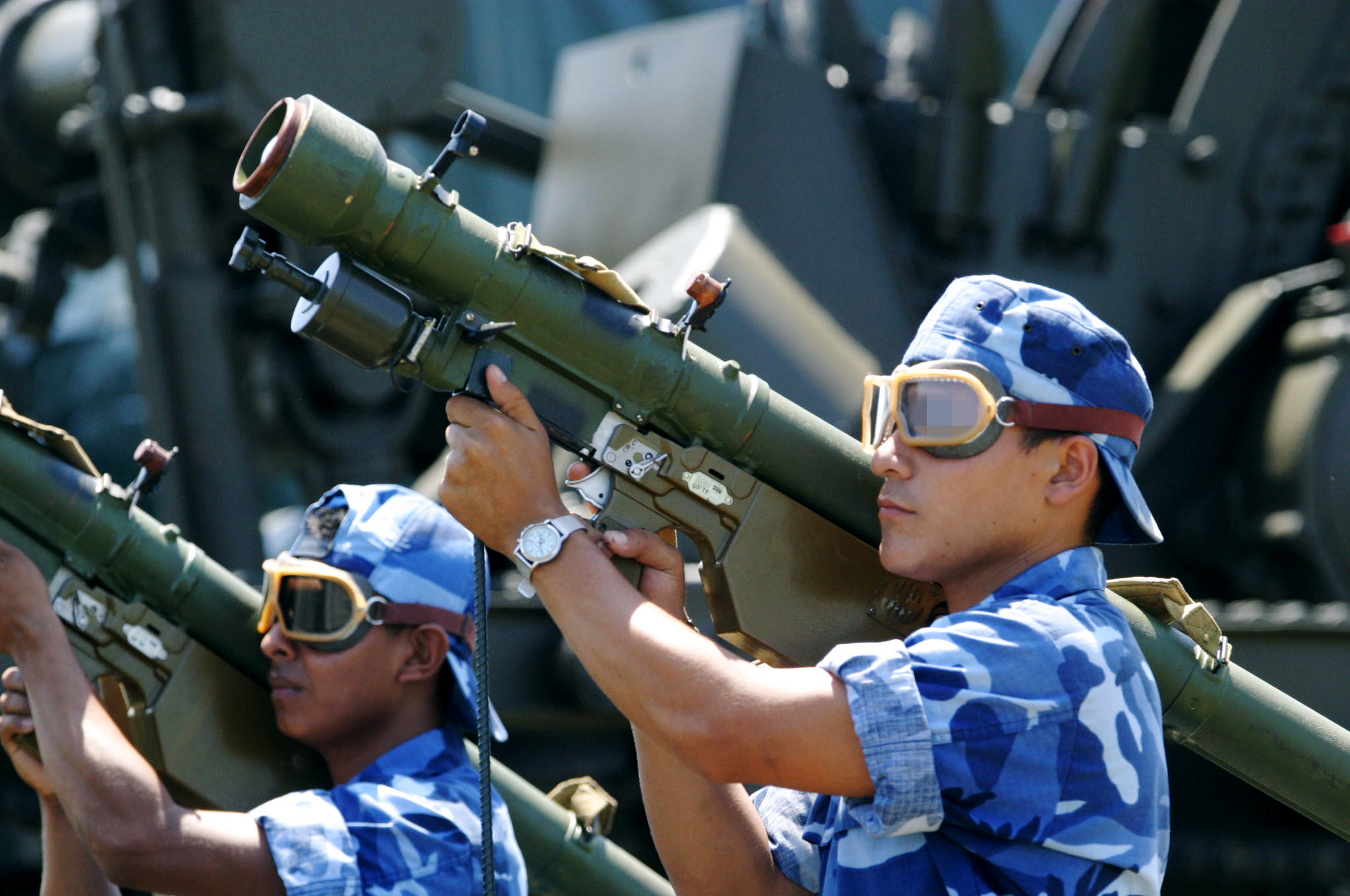
“First generation SA-7-pattern MANPADS remain the most numerous and widely proliferated illicit MANPADS worldwide,” the organization states.
Those systems were found in 23 of 32 countries where MANPADS have been located and in 12 countries, they were the only kind found.
The SA-7s – combined with other Soviet-era MANPADS found, like the SA-14, SA-16, or SA-18, which are all variants of the Igla design – account for 81% of all reports identified by model and 85% of the substantiated reports.
“The continued prevalence of illicit Soviet MANPADS, which the Survey also identified as widely proliferated in its 2013 study, is the result of decades of Cold War-era overproduction and prodigious Soviet arms exports — the effects of which will continue to be felt for years to come.”
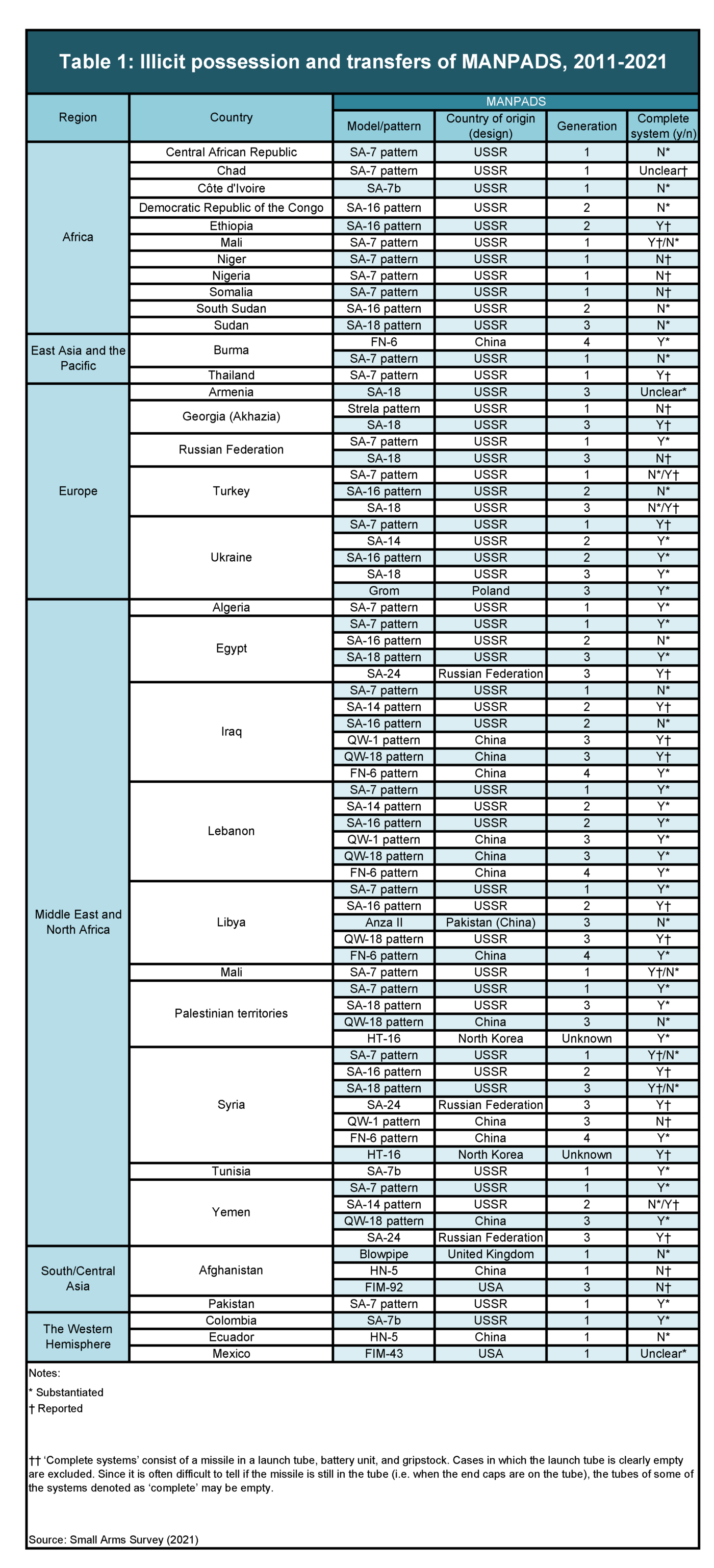
While old Soviet-origin systems make up the majority of illicit MANPADS, the survey also found small numbers of U.S., British, Pakistani and Polish systems seized in Afghanistan, Libya, Mexico, and Ukraine. The MANPADS recovered in Mexico, Small Arms Survey said, was a single first-generation US FIM-43 Redeye launcher that may or may not have contained a missile.
In Ukraine, where Russia and the insurgents it has backed have been waging war since 2014, authorities “seized several components for third-generation Polish Grom MANPADS from pro-Russian militants in 2014–2015. The seizures are the first documented cases of illicit acquisition of Grom-series MANPADS.”
The report, which as already noted only contains data compiled up to the middle of last year, does not address the current situation in Ukraine, where the U.S. alone has delivered more than 1,400 Stinger systems.

“The situation in Ukraine is too fluid to speculate about the status of the imported weapons, including MANPADS,” Small Arms Survey Senior Researcher Matt Schroeder told The War Zone Friday afternoon.
“There is always a risk of capture and loss of arms and ammunition during armed conflict, and the subsequent trafficking of these weapons—whether they are lost by the Russian or Ukrainian side,” said Schroeder. “It is impossible to predict what will happen to the weapons that are abandoned, lost, or captured during the current conflict.”
Small Arms Survey, however, “found no evidence of widespread international trafficking of munitions from eastern Ukraine from 2014 to 2020.”
What that portends for the future is unknown, Schroeder said.
However, the Ukrainian government “has a lot of experience securing weapons deployed in combat and countering arms trafficking from conflict areas. Ukrainian authorities have identified, secured, and disposed of thousands of caches of arms and ammunition, both in the east and in the rest of the country since 2014,” he said.
Jonah Leff, operations director for Conflict Arms Research, told The War Zone that Ukraine needs to heed the lessons of past conflicts when it comes to maintaining control of its ever-growing MANPADS supply
Exporting nations, in partnership with Ukrainian officials, should be “keeping detailed records of supplies and end use and monitoring and verifying such deliveries,” Leff said.
While “obviously complex and challenging in an environment like Ukraine,” Leff said that “we’ve learned a lot of lessons from wars in Afghanistan and Iraq and haven’t changed practices as a result. The blowback from Ukraine could be quite significant for years to come not only in the region, but further afield in Africa and the Middle East.”
While the future of MANPADS in Ukraine is unknown, the U.S. has previously raised the issue of these weapons being used during a conflict or crisis illegally finding their way into the hands of third parties.
In a 2017 Senate hearing, for instance, then-Central Intelligence Agency Director Mike Pompeo testified that he was worried about advanced weapons slipping out of Venezuela during the crisis there.
Of specific concern, he said, were the advanced Russian-made 9K338 Igla-S MANPADS, also known as the SA-24.
The U.S. government, among others, has long been concerned about MANPADS winding up in the wrong hands.
Relatively easy to transport and use, the fear has long been that they could just as easily be employed to try to shoot down commercial airliners as warplanes on the battlefield.
After the Soviet Union invaded Afghanistan in the 1980s, the Central Intelligence Agency supplied Stinger missiles to Afghan rebels. When that war was over, American authorities began an expensive and complex effort to buy back any missiles that hadn’t been fired. Similar efforts were taken to retrieve MANPADS used in other conflicts to prevent their proliferation. Recovering MANPADS was one of the missions being run out of the CIA annex in Benghazi, Libya, at the time of the infamous terrorist attack on the nearby U.S. consulate in 2012.
Poland may have figured out a way to at least keep unauthorized users from operating them.

Polish state-owned defense contractor Mesko had at one point designed a system preventing unauthorized use of its Grom shoulder-fired heat-seeking surface-to-air missiles, according to a November, 2021 report by CAR. Apparently the first confirmed instance of an end-use control system being fitted for MANPADS, this could be the at least a partial answer to longstanding fears about what terrorists and criminals might do if they obtained such weapons.
Contact the author: howard@thewarzone.com
